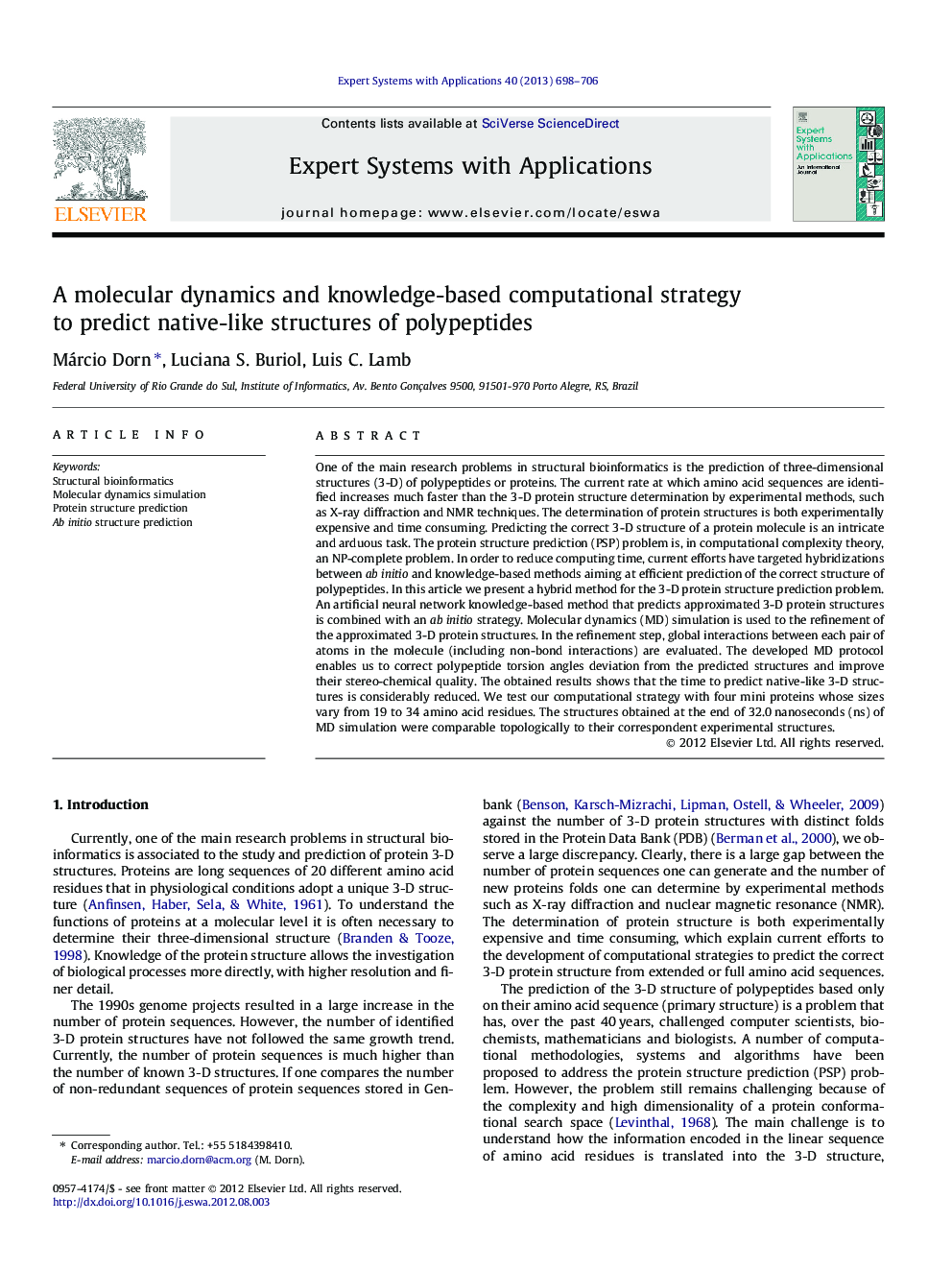| کد مقاله | کد نشریه | سال انتشار | مقاله انگلیسی | نسخه تمام متن |
|---|---|---|---|---|
| 383223 | 660808 | 2013 | 9 صفحه PDF | دانلود رایگان |

One of the main research problems in structural bioinformatics is the prediction of three-dimensional structures (3-D) of polypeptides or proteins. The current rate at which amino acid sequences are identified increases much faster than the 3-D protein structure determination by experimental methods, such as X-ray diffraction and NMR techniques. The determination of protein structures is both experimentally expensive and time consuming. Predicting the correct 3-D structure of a protein molecule is an intricate and arduous task. The protein structure prediction (PSP) problem is, in computational complexity theory, an NP-complete problem. In order to reduce computing time, current efforts have targeted hybridizations between ab initio and knowledge-based methods aiming at efficient prediction of the correct structure of polypeptides. In this article we present a hybrid method for the 3-D protein structure prediction problem. An artificial neural network knowledge-based method that predicts approximated 3-D protein structures is combined with an ab initio strategy. Molecular dynamics (MD) simulation is used to the refinement of the approximated 3-D protein structures. In the refinement step, global interactions between each pair of atoms in the molecule (including non-bond interactions) are evaluated. The developed MD protocol enables us to correct polypeptide torsion angles deviation from the predicted structures and improve their stereo-chemical quality. The obtained results shows that the time to predict native-like 3-D structures is considerably reduced. We test our computational strategy with four mini proteins whose sizes vary from 19 to 34 amino acid residues. The structures obtained at the end of 32.0 nanoseconds (ns) of MD simulation were comparable topologically to their correspondent experimental structures.
► An ANN strategy is used to predict approximated 3-D protein structures.
► A knowledge-based method is combined with an ab initio strategy.
► Molecular dynamics simulation is used to refine 3-D protein structures
► The proposed method was tested with four protein sequences.
► Analysis reveal that the proposed method presents accurate results.
Journal: Expert Systems with Applications - Volume 40, Issue 2, 1 February 2013, Pages 698–706